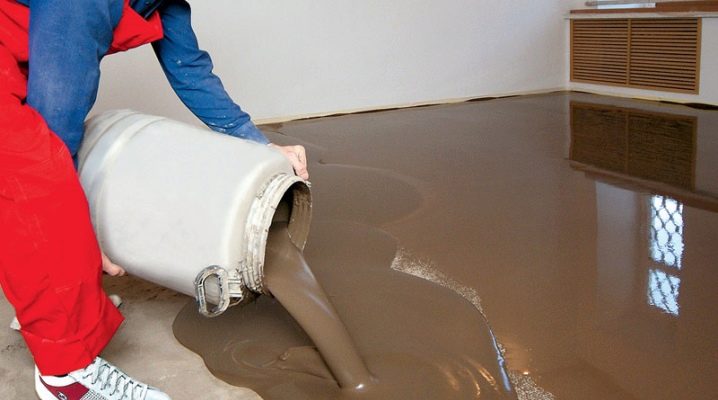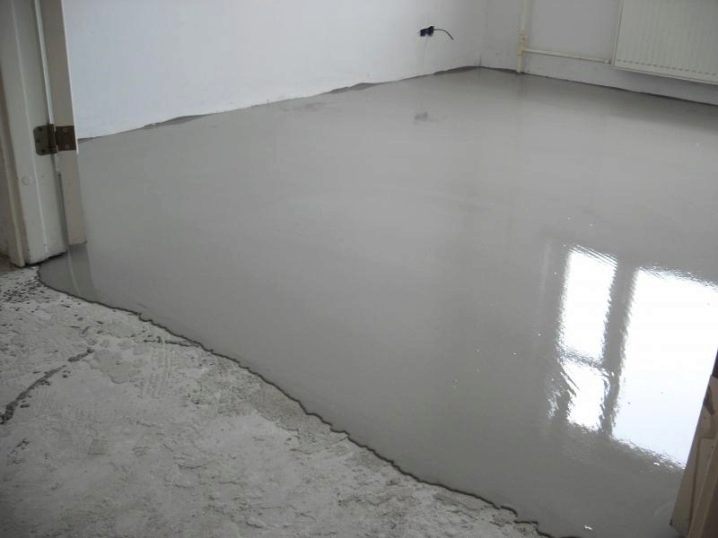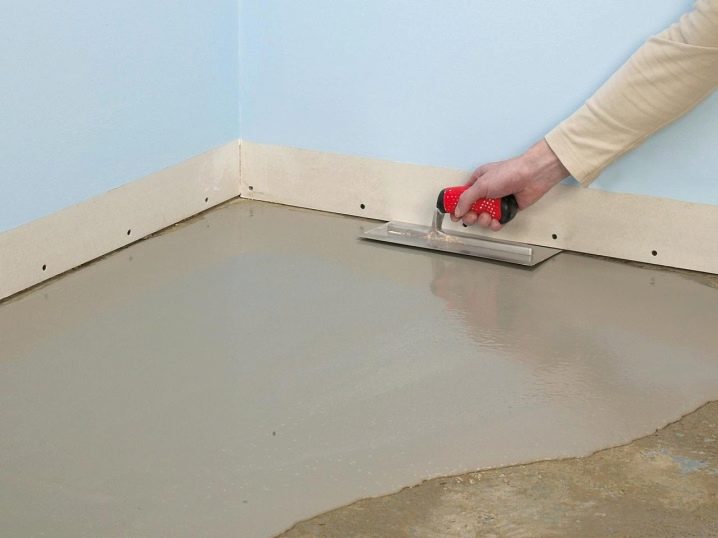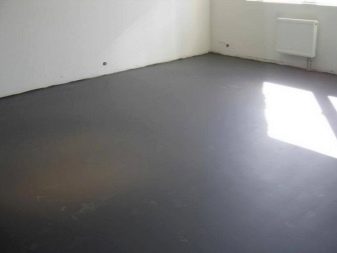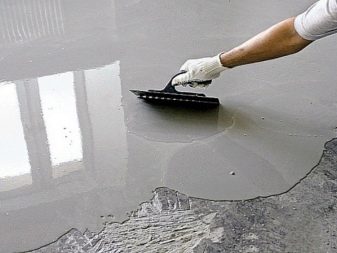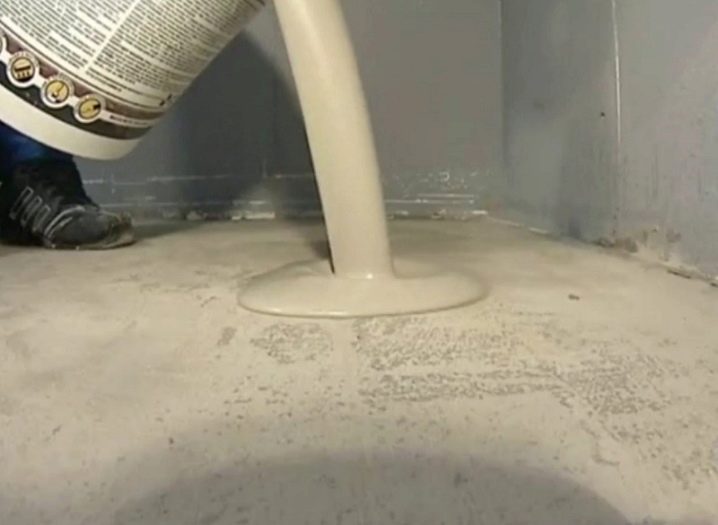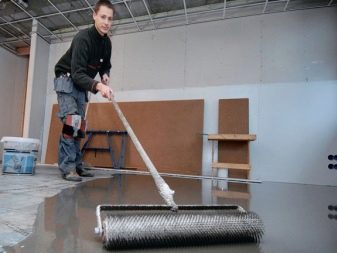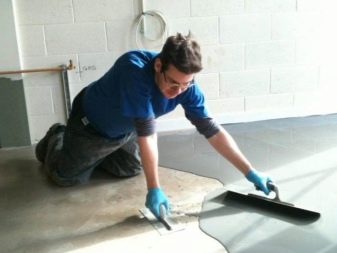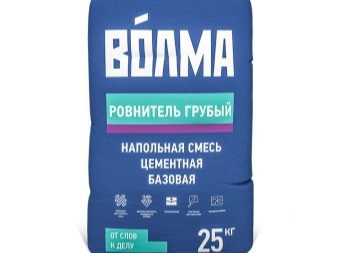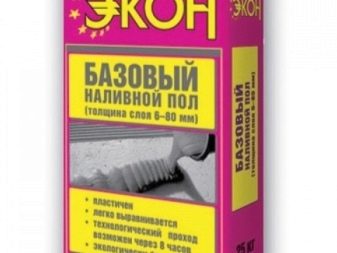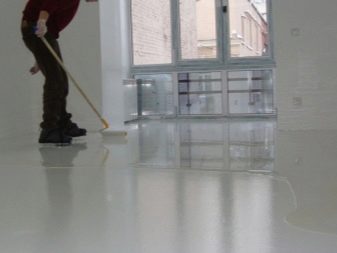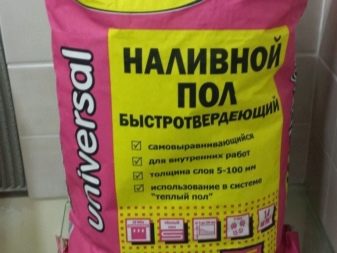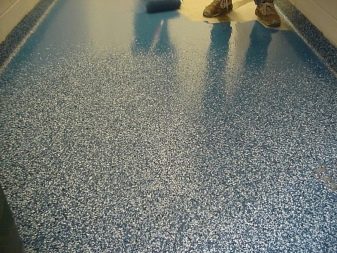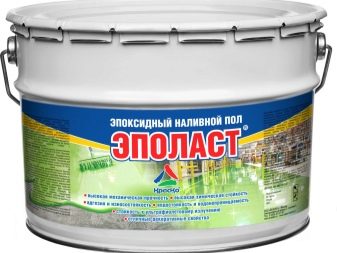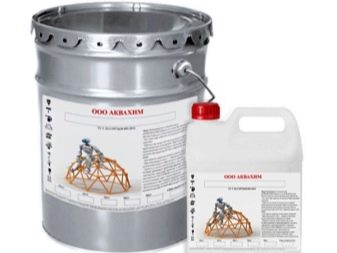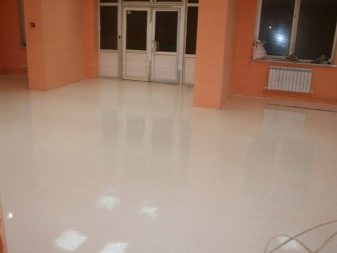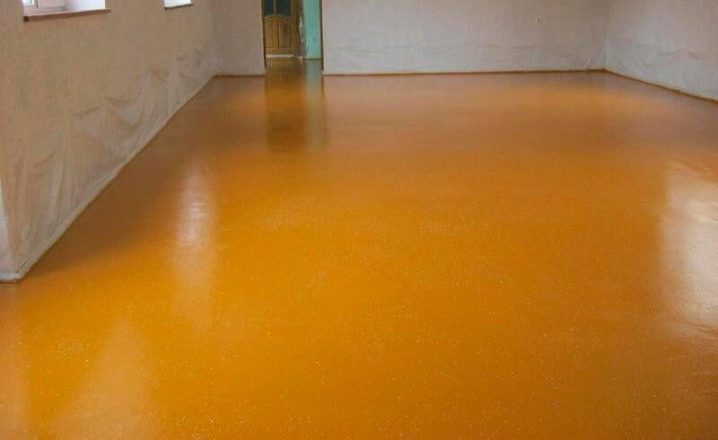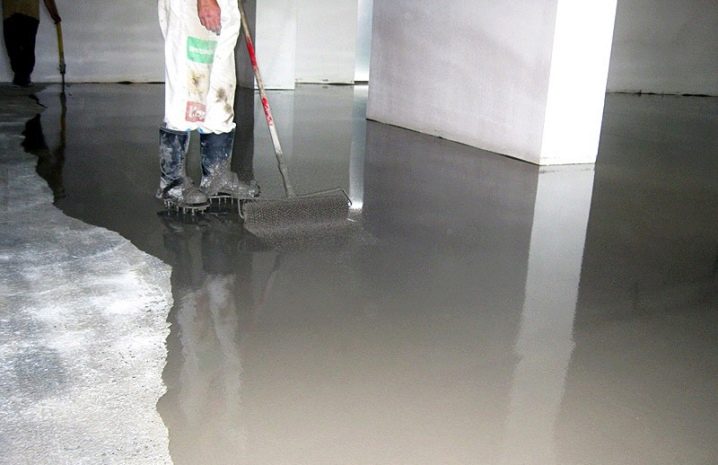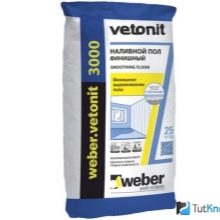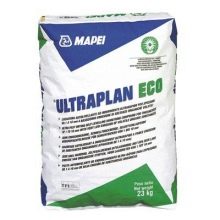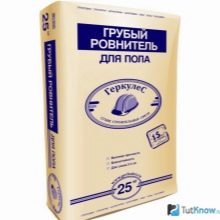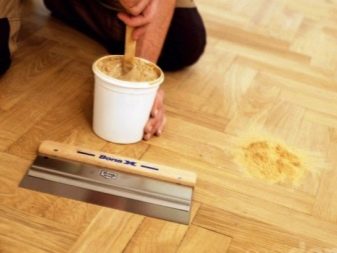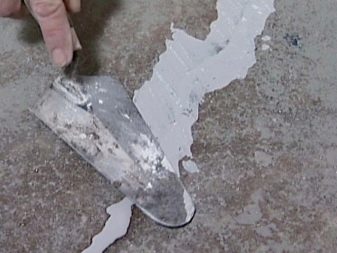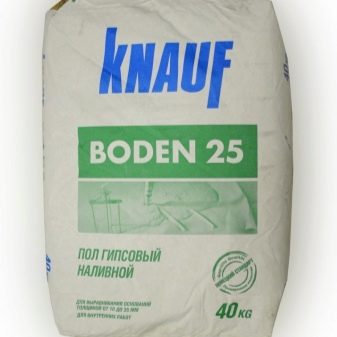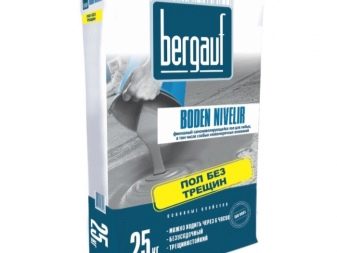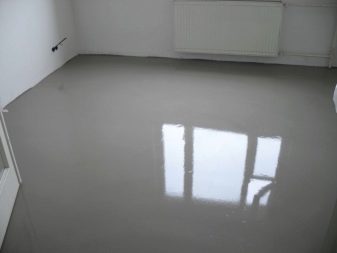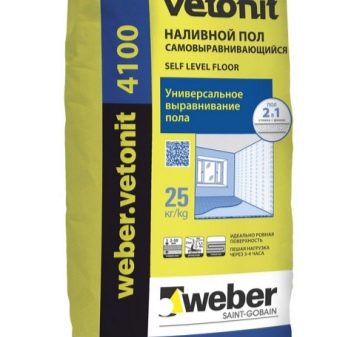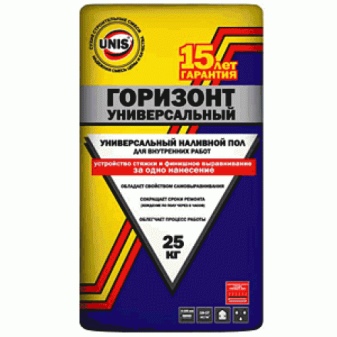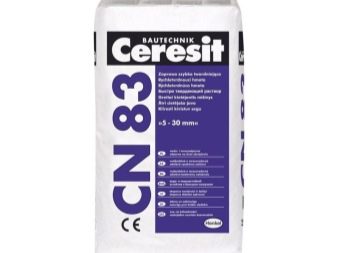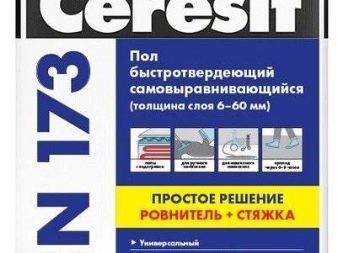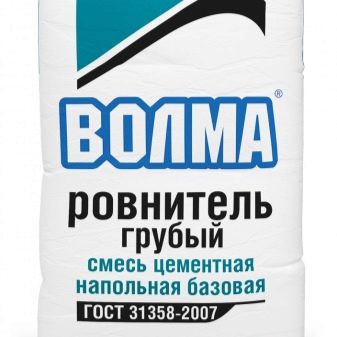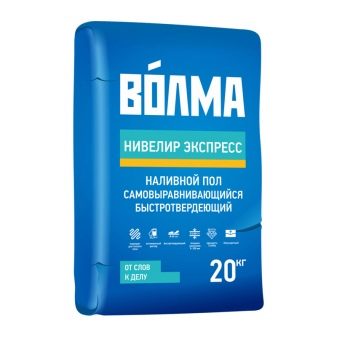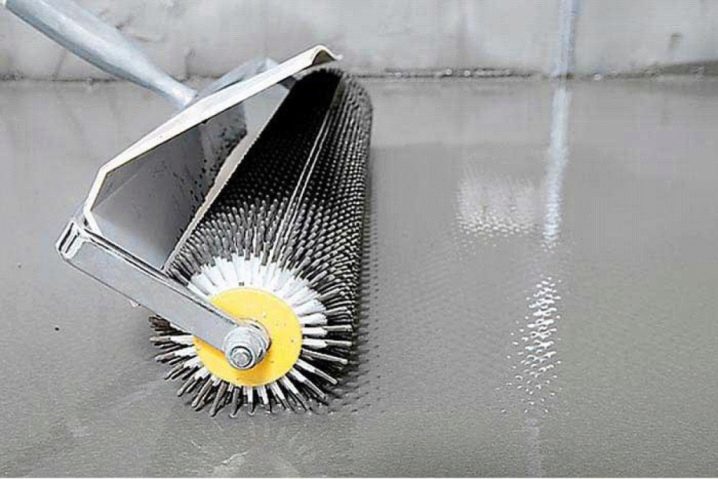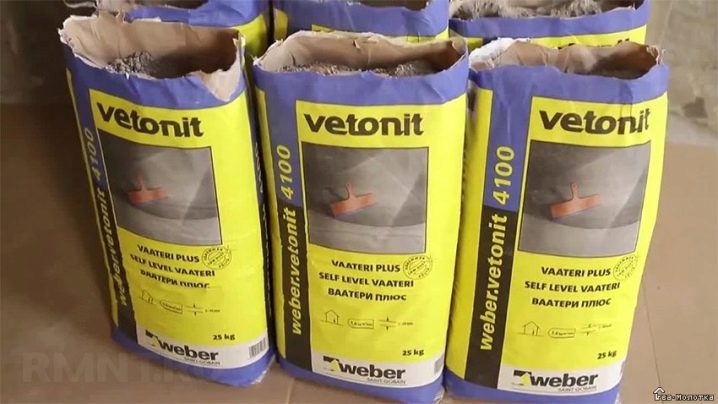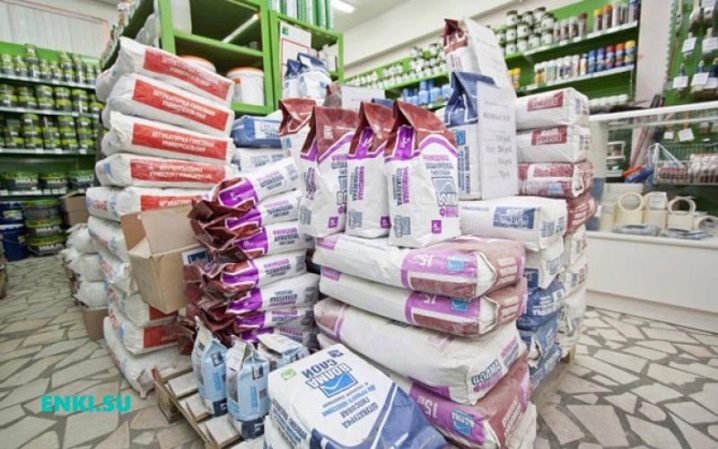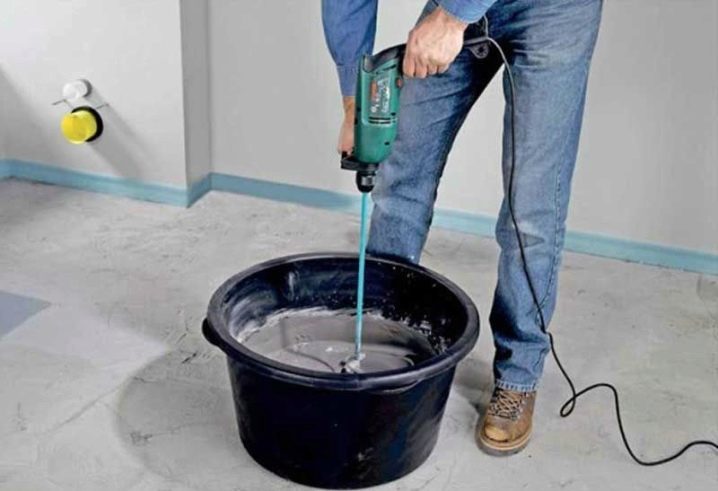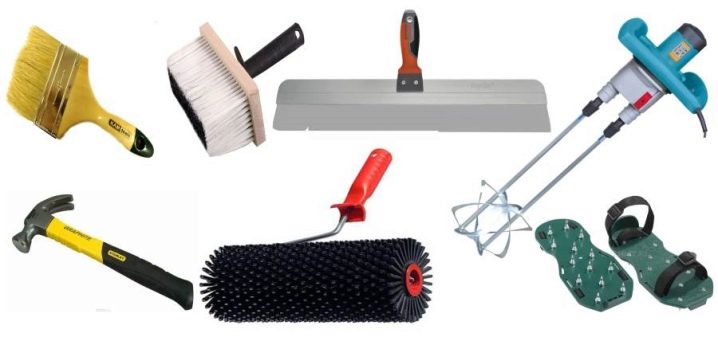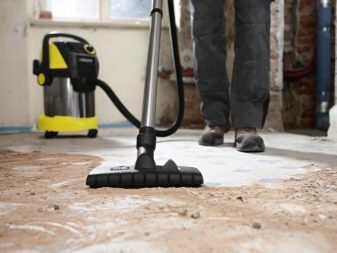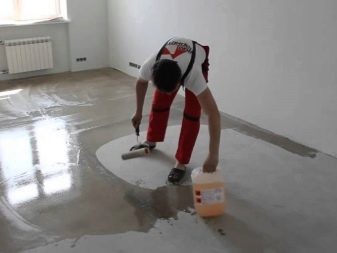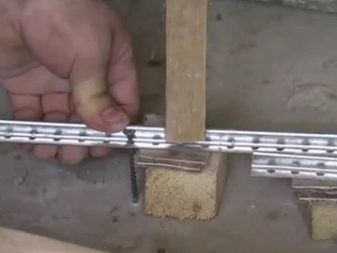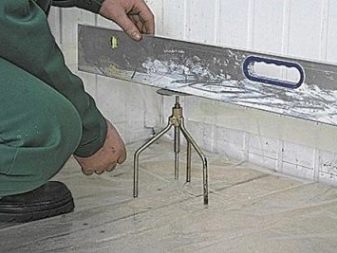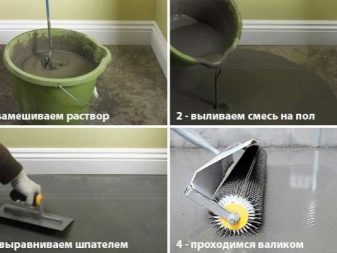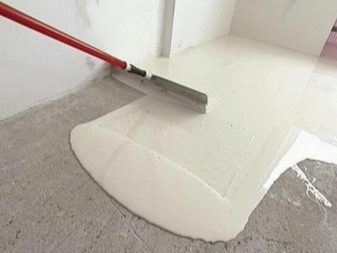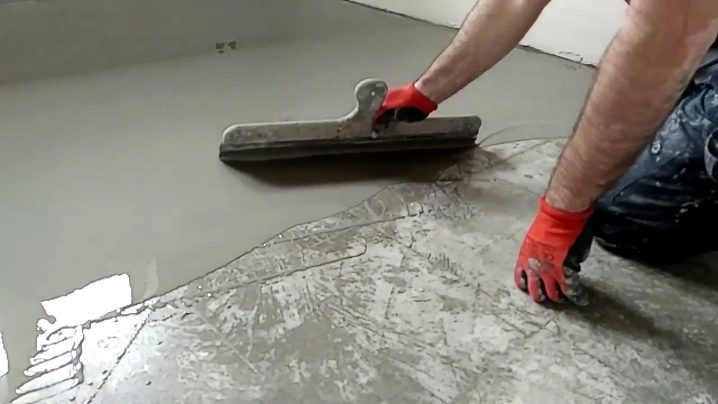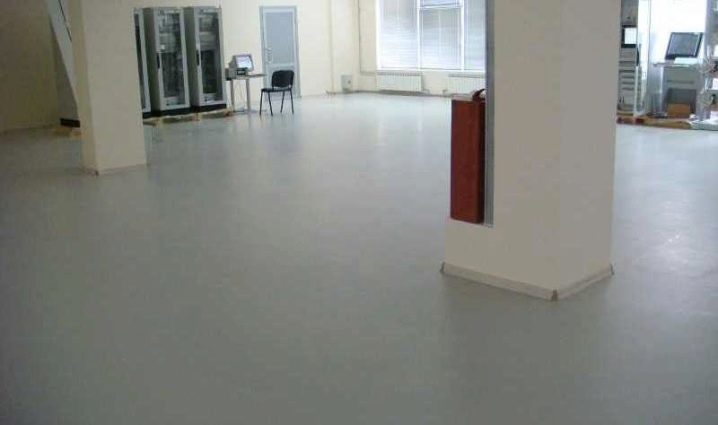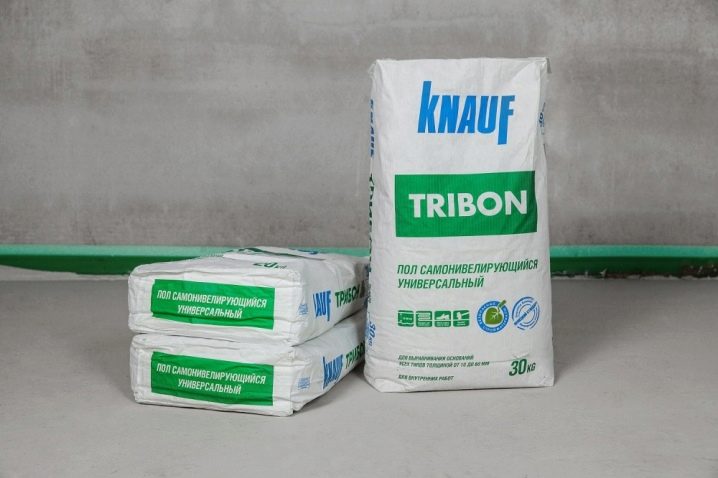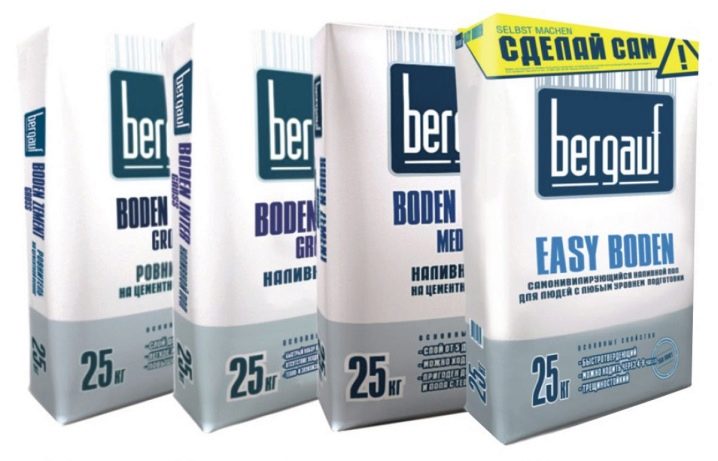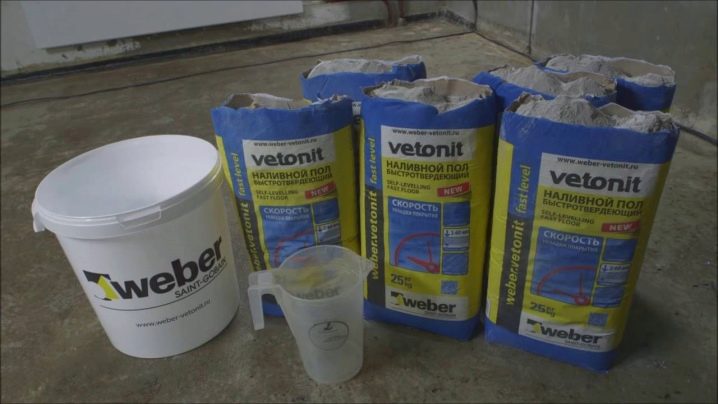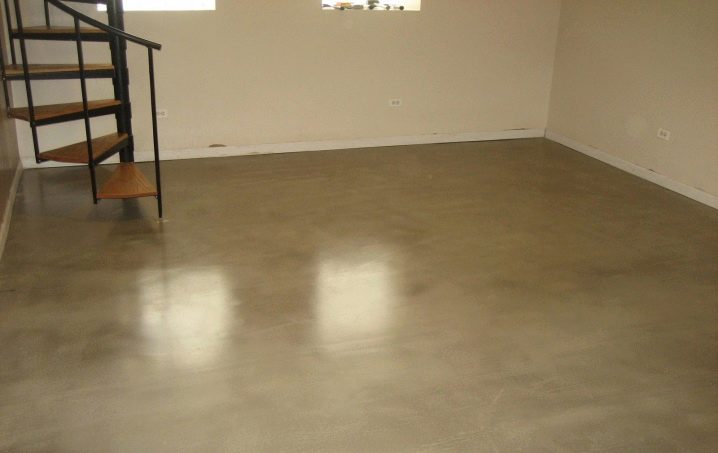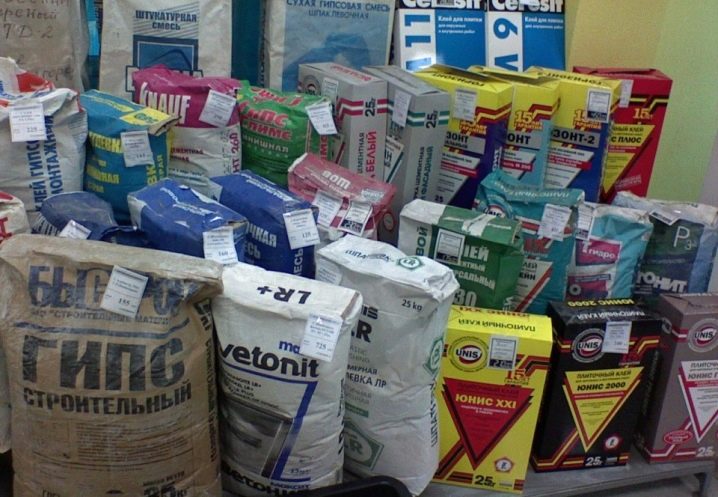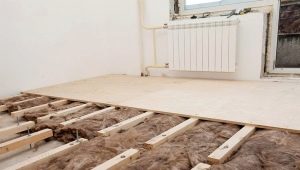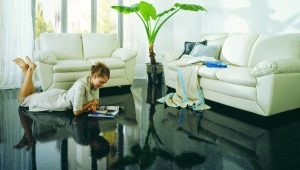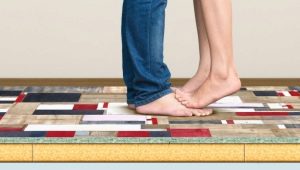Self-leveling floor mixes: which ones are better?
Very often for laying the flooring requires a flat base floor. Nowadays, leveling the floor is a simple task. If earlier the only solution was to construct a concrete screed, today, dry methods, traditional cement screed, and self-leveling solutions of various types are used to level the floor.
What it is?
Self-leveling floor mixes are new generation cement-based or gypsum-based mixes mixed with finely dispersed filler and with special additives that ensure uniform distribution of the mixture and accelerate its hardening. Such mixtures are also called levelers or levels. Bulk floor can be done in any type of premises. Within a day, such coverage can be exploited.
A feature of self-leveling floors is that they are used only as a base under the finish coat. On top of them you can safely lay linoleum, laminate, parquet or any other floor covering.
Self-leveling floors can be arranged on different types of bases.
The mixture hardens on them with a thin film, which:
- It has a small weight;
- It has good heat and sound insulation characteristics;
- Resistant to wear;
- Not a source of dust.
With the help of self-leveling mixtures, it is possible to eliminate ground height differences of up to 2 cm.
The advantages of this type of mixture also include:
- Good fluidity. The mixture does not need to be spread on the surface of the base;
- Coating evenness. Due to its good fluidity, the mixture is evenly spread throughout the floor, creating an absolutely level base that hides all the projections and depressions;
- High penetrating power. The mixture fills even the smallest indentations and gaps in the base and adheres well to it;
- Increased strength;
- Flame retardant;
- Fast setting and curing. Self-leveling floor dries two weeks maximum (cement). Quick-drying (plaster) - and even less;
- No need to reinforce the base and exhibit lighthouses;
- Resistance to temperature changes;
- The minimum percentage of shrinkage of the base;
- Low cost of material;
- The variety of types of mixtures from different manufacturers;
- Low labor intensity and ease of preparation and pouring the mixture.
The thickness of the applied layer of self-leveling mixture is usually from one to 10 mm. In some cases, a layer of 50 mm is allowed.
Despite the abundance of advantages, self-leveling floors have certain disadvantages:
- The smaller the layer thickness, the lower the strength of the floors;
- Such floors are difficult to dismantle;
- Due to the liquid structure of the mixture, it is impossible to make the base with a slope.
In what cases are needed?
Self-leveling mortar is used when:
- Quickly and not expensively it is necessary to update the basis of a floor;
- Leveling the base of the floor with small irregularities is required;
- The leveling of the base is required due to the presence of height differences (up to 1-2 cm);
- It is necessary to make a smooth base floor.
Kinds
Dry mixes for self-leveling floors are divided into several types.
According to the main substance:
- Cement. This kind of mixture used in different rooms, including wet. Cement mixtures are filled with a layer from 2 to 50 mm. Self-leveling cement-based floors have higher rates of strength and wear resistance, adhere well to the base, practically do not crack, and practically do not shrink. But the use of cement rovniteli is more expensive and they gain final strength only after 20 days;
- Anhydrite. These are materials based on gypsum. Due to the fact that gypsum absorbs moisture, such mixtures can only be used in dry rooms. This floor is poured with a thickness of 2 to 11 mm. Its main advantage is the speed of drying.
By type of polymerizable binder:
- Polyurethane. Such mixes for a jellied floor possess the increased elasticity and resistance to influence of low temperatures. Such coatings are best suited for rooms where there is increased patency (warehouses, offices, trading floors);
- Epoxy. The composition of such levels include epoxy resins, due to which the floor acquires enhanced strength characteristics and resistance to temperature extremes, moisture and the effects of various chemicals.Epoxy leveling agents are usually used for flooring catering, chemical plants, car washes;
- Epoxy-polyurethane. Such mixtures combine the properties of the two above-mentioned levels and are used on objects with a continuous flow of people (subway, train stations, etc.);
- Methyl methacrylate. Floors with such a binder have an increased curing rate. Such a level can be applied with a layer of almost any thickness, and this should be done quickly due to the presence of a strong odor, which disappears when the mixture hardens;
- Cement-acrylic. The floors of such mixtures are obtained with a somewhat rough surface, and therefore such mixtures are used in rooms where floors are subject to increased safety requirements (saunas, swimming pools, entrance groups).
To destination:
- Coarse mixture. Such compositions are used when you want to hide quite large irregularities in the floor. Levels of this type are applied in 5-6 mm layer;
- Finishing mixture. Used as a final floor finish. A layer of such a rover is applied with a thickness of not more than 4 mm on the pre-leveled floor with a rough mixture to give itgreater evenness and smoothness. Apply the finishing compound only after the final drying of the lower layer of the screed. In some cases, such a base is not even covered with laminate, linoleum or other coating. Such a floor can be decorated with any drawings or ornaments;
- Fast setting. It is used when the work on leveling the foundation of the floor must be carried out as soon as possible. Such levels can be applied and a thin, and rather thick layer, depending on the degree of unevenness of the base;
- Special blends used only to seal holes or cracks in the base of the floor. The peculiarity of such mixtures is increased adhesion to the base of the floor;
- Solutions for the restoration of wooden floors. Such formulations contain special fibers that improve adhesion, thereby providing a reliable tie.
Rating
Today the construction market is replete with various brands of self-leveling compounds. The leading position due to its practicality and quality is the composition of Knauf "Boden". It consists of specially purified gypsum of fine fraction, quartz sand, various polymers and other additives.
The use of such self-leveling mixture provides increased reliability and durability of the base of the floor. This type of screed can be used when installing heated floors, as the plaster component contributes to the preservation of heat in the room.
Well proved a level Bergauf based on cement.
Under this trademark are produced mixtures that are used for the device:
- rough initial basis. The mixture has good ductility, does not shrink, no cracks form on the finished substrate;
- self-leveling floor with increased strength. The mixture is well leveled and does not form cracks. Maximum layer thickness - 5 cm;
- self-leveling floor that hardens as soon as possible.
Products have high technical characteristics Vetonit, which due to the inclusion in its composition of original additives has good fluidity, resistance to cracking and dries quickly (for example, Vetonit "Vaatery Plus"). All levels of this brand are used to create only a rough base.
Self-leveling blends have the best price-quality ratio. "Horizon". The main use of mixtures of this brand - the finish coating. The maximum layer of this screed should not exceed 10 mm. Floors made with the use of these mixtures are characterized by high levels of evenness, resistance to moisture, quick drying (6 hours). They can be laid any coating, ranging from porcelain and linoleum.
It is also possible to use such a floor without the use of flooring.
Self-leveling compounds are widespread in Russia Ceresitwhich are applied to different types of the bases - concrete, wooden. Particular attention should be paid to the mixture “Ceresit Moment Flat Floor”, which allows leveling elevation differences up to 8 cm. The composition of the mixture includes gypsum and cement. The structure can be used in different rooms for the device of the draft basis. If it is necessary to perform floor leveling works in the shortest possible time, then a mixture of Ceresit CN-83 is suitable for such purposes. The level quickly hardens and is very resistant to moisture.
A floor made with the use of such a mixture can be used as a finish, even in places where there is increased maneuverability.
Consumer interest also attracts a mixture of "Nivelir-Express" from brand Volma, which allows you to create a smooth finish coating, eliminating differences in heights of up to 1 cm. It is used in any premises. For filling cavities and cracks is recommended to use a mixture of "Volma Rough."
Also on the market you can find self-leveling mixtures "Bolars", Ivsil, "Miners", "Plitonit", "Alfapol", which also collect positive consumer reviews.
Calculations
To calculate the flow rate of a self-leveling mixture for a floor base unit, you need to know:
- Area of the room;
- The thickness of the poured mixture;
- The density of the leveling mixture.
Before starting the calculations, it is assumed that for the filling of 1 square meter. m base thickness of 1 mm is needed 1 liter of water.
For example, if it is necessary to level the floor in a room of 10 square meters. with a layer thickness of 7 mm, you need 70 liters of water (1l * 7 mm * 10 square meters).
Further, the density of the mixture is entered into the calculation, which is necessarily indicated on the packaging. The amount of water obtained in the previous calculation must be corrected for the real density of the leveling mixture.If the density of the level is, for example, 1.4 kg / l, then the required amount of solution will be 1.4 * 70 = 98 liters.
You can do it easier. On the packaging with a self-leveling mixture, the manufacturer indicates the consumption of the composition per 1 m2 of floor with a thickness of 1 mm. This value is multiplied by the area of the room and the thickness of the casting layer in mm. The result will be the flow of the mixture to the whole room.
Professional Tips
Arrange self-leveling screed in the apartment with his own hands is not difficult. You just need to buy a self-leveling mixture, having previously calculated the required amount of it, and prepare the necessary tools and tools for work.
To fill the level you need the following tools:
- Capacity in which the solution will be mixed. Its volume should be sufficient to mix about 25 kg of the mixture in it at once. However, it should be convenient for mixing and pouring the solution;
- Mixer for mixing the solution. For these purposes, you can use an electric drill, providing it with a special nozzle, or a hammer drill. It is impossible to mix the solution of the roving mill manually, since it will not be possible to achieve the required level of quality of the mixture, and, accordingly, the final result.It has been established that the strength of the self-leveling floor, the solution for which is mixed by hand, is reduced by almost a third;
- Brush or roller to apply a primer;
- Spatula with a wide spatula to distribute the mixture;
- Needle roller to remove air from flooded screed;
- Level to accurately expose beacons;
- Lighthouses
Before you proceed directly to pouring self-leveling mixture, you must carefully prepare the basis on which it will be made.
First you need to remove all construction debris with a construction vacuum cleaner or at least a broom. Wet surfaces must be dried. If there are traces of varnishes, paints, and other petroleum products on the basis, then it should be degreased, otherwise there will not be a sufficient level of adhesion of the base and screed, which will reduce the life of the poured floor.
After cleaning the base proceed to its primer. This stage is necessary to improve the water resistance of the casting base and improve its adhesion with the screed. Primer compositions are better to take the same brand as leveling mixture.
The next stage of the preparatory work is the installation of lighthouses. First you need to figure out where the highest point of the base is. Using a level, a small portion of the solution is poured over it. Further along the entire perimeter of the room is marked the level of the future floor. Lighthouses fix the same solution, which will be made fill. Attach them to the same composition that will be used as the main coating.
The solution for self-leveling floors is prepared in strict accordance with the instructions of the manufacturer. As a rule, about seven liters of water are required per 25 kg of dry matter. First pour the mixture into the container for mixing, and then add the required amount of water. After that, using a mixer to prepare a homogeneous mixture for pouring the floor. You need to interfere at a slow speed of at least 5 minutes. Then the mixture is allowed to stand for 5 minutes and again stirred for 3 minutes. After that, proceed to work.
Pour the solution, starting from the corner of the room, gradually and uniformly filling the entire floor space with a solution. You can help distribute the solution with a wide spatula.
During operation, it is important to ensure that there are no drafts in the room, and the temperature of the base to be leveled does not fall below 5-10 degrees. After filling, air is removed from the solution using an aeration roller on a long handle.
The solution begins to harden after 40-50 minutes after preparation. Therefore, it is necessary to work quickly and prepare as much mixture as can be used during this time. After setting the screeds, the beacons are removed from it, and the grooves from them are filled with mortar.
If the self-leveling mixture is applied in several layers, then each layer should dry for at least 24 hours.
To ensure that the floor is perfectly smooth, a finish layer is poured onto the already applied layer of rough leveling. To do this, the base is also coated with a primer of 2-3 layers. There is no need to install beacons, as the finishing levels are quite liquid and spread out extremely smoothly. Since the finish leveling machine dries quickly enough (in 15 minutes), before it is applied, the whole room is divided into zones, each of which must be filled during this particular time. Begin pouring just from the corner.After pouring each section on it pass aeration roller.
After completion of all work, self-leveling floors should be protected from the action of the sun, wind and heating appliances.
Manufacturers and reviews
The most famous manufacturers of self-leveling flooring are well-known international and domestic companies specializing in the production of building materials, namely:
Knauf - German company with a long history. Engaged in the production of a wide range of building materials, including dry construction mixtures;
Bergauf - actively developing modern construction mixes production company, one of the ten largest participants on the Russian market;
Weber - is part of the international group Saint-Gobain. The company is one of the recognized world leaders in the industry of dry mixes for the construction and finishing. Leveling agents for the floor of this company are represented by the trademark Vetonit;
Unis - a group of companies operating in the Russian dry building mixes market for more than 25 years. Levels for the floor are represented by the Horizont trademark;
Henkel - a well-known and popular company in the international market, operating in a variety of industries. Since 1986, she has mastered the direction of the production of materials for waterproofing and heat insulation, acquiring Ceresit, which also produces dry mixes for self-leveling floors;
"Vomla" - Russian company with more than 70 years of history. Specialization - the release of building and finishing materials;
"Miners" - Russian company that has been producing dry building mixtures for over 25 years.
Self-leveling compounds that are supplied to the market by these companies have all the necessary certificates and comply with safety standards, which ensures the high quality of the floor leveling process. Therefore, the feedback on this product is positive in most cases.
Consumers note the ease of the process of pouring the floor and the speed of its drying. In addition, to perform such a coupler does not require any special equipment and tools. At the same time, consumers are usually very pleased with the result - a smooth and almost perfectly smooth floor, which in some cases can be used without additional flooring.
Negative reviews about self-leveling compounds most often occur due to non-compliance with the technology of filling floors, not properly diluted mortar, incorrect preparation of the base, use of primer and leveling of different manufacturers, non-compliance with the conditions of work.
Therefore, in order not to repeat the sad experience of these respondents, it is very important to choose the right mix correctly and consider what other materials and tools will be needed to carry out such work.
How to self-pour the floor self-leveling mixture, see the next video.
